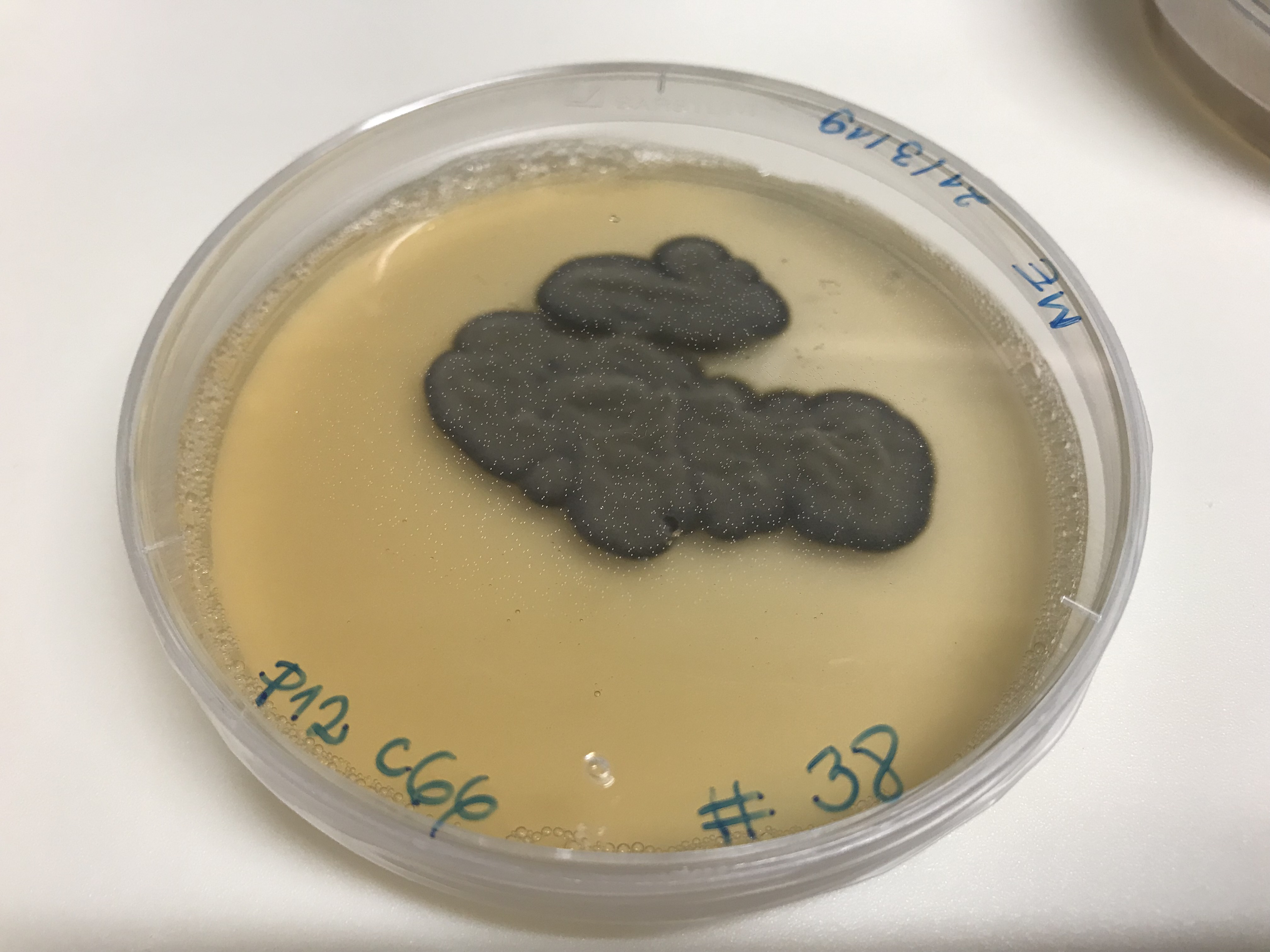
Image Credit: Mariana Kluge
Dothideomycetes are a large group of fungi that comprises about 19000 species (Wijayawardene, et al., 2017). These are ubiquitous fungi which can occupy different ecological niches, such as plant-pathogens, endophytes, mycorrhizal symbionts, and saprobes (Haridas et al., 2020). Dothideomycetes have been identified in extreme, cold environments (Onofri et al 2008), and have been found to be dominant in the Antarctic permafrost (Chen et al., 2017; Goordial et al., 2016). The isolate P12C66 has been isolated from the sediment of thermokarst ponds in Abisko, Sweden. Thermokarst ponds, which emerge from the thawing permafrost, can be hotspots for microbial production and become an important source of greenhouse gas emissions (Abnizova et al., 2012). However, little is known about the fungal contribution in such water bodies when it comes to carbon degradation. The genome sequencing of fungal isolates from these environments aims to assess their functional potential, and to better understand the fungal contribution in the permafrost carbon feedback.
References:
- Wijayawardene NN, Hyde KD, Rajeshkumar KC. et al. Notes for genera: Ascomycota . Fungal Diversity 86, 1–594 (2017). doi:10.1007/s13225-017-0386-0
- Haridas S, Albert R, Binder M, Bloem J, LaButti K, Salamov A, Andreopoulos B, Baker SE, Barry K, Bills G, Bluhm BH, Cannon C, Castanera R, Culley DE, Daum C, Ezra D, González JB, Henrissat B, Kuo A, Liang C, Lipzen A, Lutzoni F, Magnuson J, Mondo SJ, Nolan M, Ohm RA, Pangilinan J, Park HJ, Ramírez L, Alfaro M, Sun H, Tritt A, Yoshinaga Y, Zwiers LH, Turgeon BG, Goodwin SB, Spatafora JW, Crous PW, Grigoriev IV. 101 Dothideomycetes genomes: A test case for predicting lifestyles and emergence of pathogens. Stud Mycol. 2020 Feb 1;96:141-153. doi:10.1016/j.simyco.2020.01.003
- Onofri S, Barreca D, Selbmann L, Isola D, Rabbow E, Horneck G, de Vera JP, Hatton J, Zucconi L. Resistance of Antarctic black fungi and cryptoendolithic communities to simulated space and Martian conditions. Stud Mycol. 2008;61:99-109. doi:10.3114/sim.2008.61.10
- Chen YL, Deng Y, Ding JZ, Hu HW, Xu TL, Li F, Yang GB, Yang YH. Distinct microbial communities in the active and permafrost layers on the Tibetan Plateau. Mol Ecol. 2017 Dec;26(23):6608-6620. doi:10.1111/mec.14396
- Goordial J, Davila A, Lacelle D, Pollard W, Marinova MM, Greer CW, DiRuggiero J, McKay CP, Whyte LG. Nearing the cold-arid limits of microbial life in permafrost of an upper dry valley, Antarctica. ISME J. 2016 Jul;10(7):1613-24. doi:10.1038/ismej.2015.239
- Abnizova A, Siemens J, Langer M, Boike J. Small ponds with major impact: The relevance of ponds and lakes in permafrost landscapes to carbon dioxide emissions. Global Biogeochem. Cycles, 26, GB2041. doi:10.1029/2011GB004237
